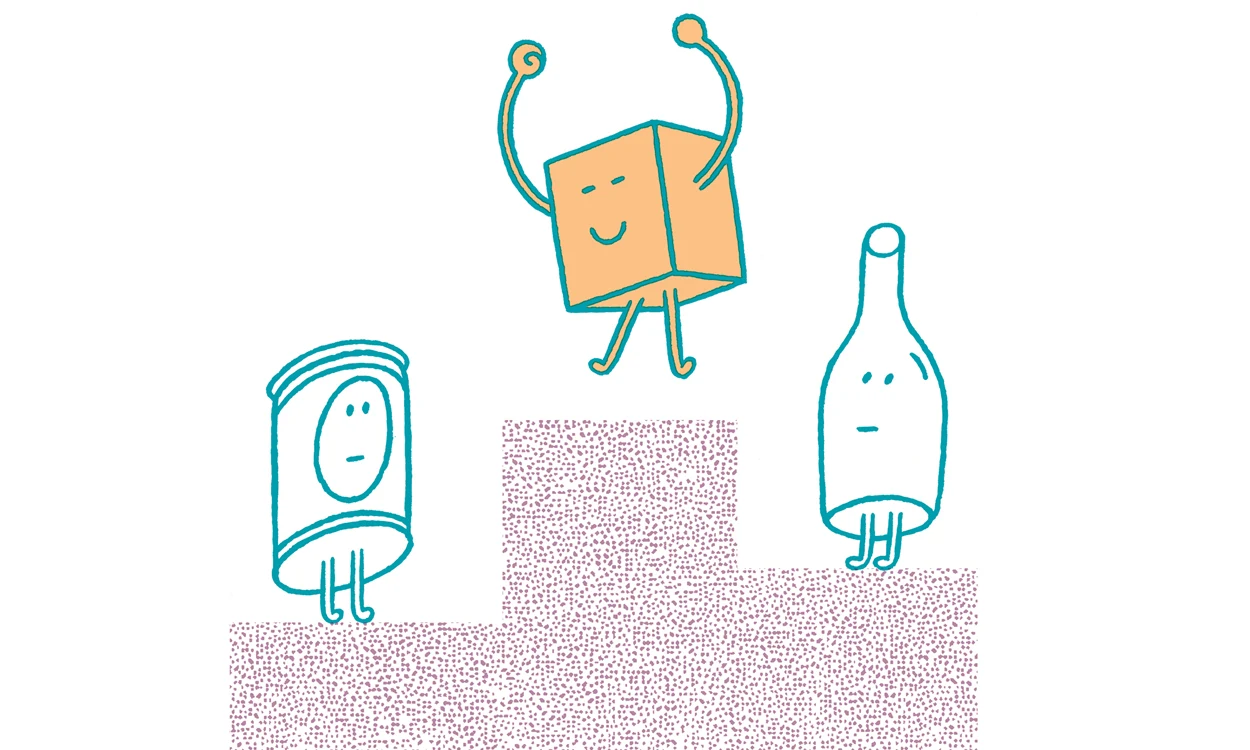We’re separating our waste like never before, and today most consumers take it for granted that packaging should be easy to recycle. However, the choice of sustainable packaging material, as well as how the packaging is made and transported, plays an important part in its overall environmental impact.
Using paperboard for liquid food products, for example, is more climate-smart than using glass or plastic packaging. This was shown by a Nordic study carried out by IVL Swedish Environmental Research Institute a few years ago.
The study calculated the overall climate impact of different types of packaging for the entire life cycle, from sourcing raw material and production to consumption and waste management. Beverage cartons produced less than half as many emissions of greenhouse gases as the alternative packaging types studied by IVL.
Another advantage of paperboard is that it can be made rectangular and stackable, which often simplifies transport. Empty paperboard packaging can also be transported flat to save more space. Glass packaging, on the other hand, is heavy, fragile to transport and needs large amounts of energy in production.
Metal cans are also very energy-intensive, both during production and in recycling, and they create high emissions during their life cycle.
Raw oil-based plastic also causes extensive emissions, although it does have the advantage that, in some cases, the packaging can be made small and thin. However, plastic that is not recycled but is sent to landfills or discarded in nature can cause a lot of damage.
From a climate perspective, it is therefore often wise to replace non-renewable materials such as plastic, metal and glass with renewable materials like paperboard and paper.
“We are already seeing many signs of a shift in this direction,” says Staffan Sjöberg, Holmen environmental spokesman.
“But changing packaging systems entails major machine installations for the product manufacturers – and that type of change takes time.”
Created 3 March, 2014.


